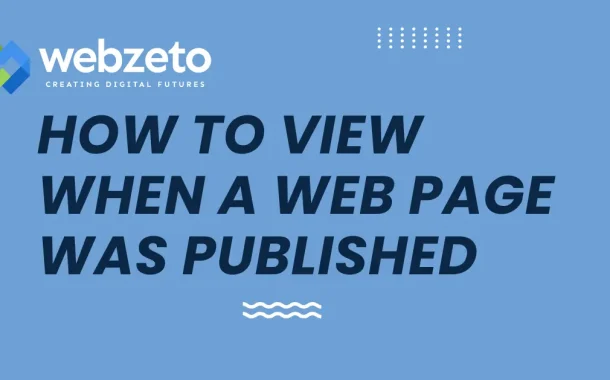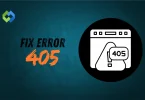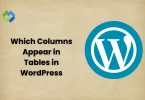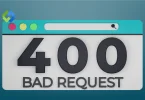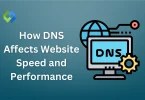There are many situations where knowing the publish date is useful. For example, when reading news articles, it’s important to know if the information is still relevant. In academic research, you need to cite the most recent sources. If you’re comparing products, newer reviews are often more helpful.
Table of Contents
Table of Contents
Method#1 Checking the Web Page Itself
Locating the Publish Date on the Web Page
The easiest way to find the publish date is by looking directly on the web page. Most websites, especially blogs and news sites, display the date near the article’s title, either at the top or bottom of the content. This date is usually labeled as “Published on” or “Posted on,” followed by the specific date. In some cases, you might also see a “Last Updated” date, which indicates when the content was last revised. This can be useful if you’re looking for the most current information on a topic.
Checking the Page’s Metadata
If the publish date isn’t visible on the page, you can check the metadata embedded in the page’s HTML code. To do this, right-click on the web page and select “View Page Source” or “Inspect”. This opens the HTML code of the page. Use the search function (Ctrl + F) to find terms like “datePublished,” “publishDate,” or “dateModified.” These tags are often used in the metadata to indicate when the content was originally published or last updated. This method can reveal the date even if it’s not displayed on the page itself.
Searching for Hidden Dates
Sometimes, the date might be hidden within the page’s content in other ways. For instance, the URL might contain the publish date, especially on blogs where the date format is part of the link structure (e.g., www.example.com/2023/08/article-title). Additionally, checking the comments section, if available, can provide clues. Comments are usually time-stamped, and the earliest comment can give you an idea of when the article was first published.
Method#2 Using Online Tools
Several online tools are designed to help you find the publish date of a web page. These tools are simple to use and often free. Some popular ones include the “SEO Review Tools” publish date checker, “Small SEO Tools,” and “Website Carbon.” These tools scan the page’s metadata and other elements to provide you with the date it was published.
Step-by-Step Guide to Using Online Tools
Using these tools is straightforward. First, copy the URL of the web page you’re interested in. Then, visit one of the publish date checker tools. Paste the URL into the search box provided and click on the “Check” or “Analyze” button. The tool will scan the web page and display the publish date if available. Some tools might also show additional information, such as the last modified date or content updates.
Pros and Cons of Relying on Online Tools
While online tools are convenient, they have their limitations. The accuracy of the date they provide depends on how well the web page’s metadata is set up. If the website owner hasn’t correctly configured the metadata, the tool might return inaccurate or incomplete information. Additionally, some tools may not be able to detect the date on certain types of web pages, such as dynamically generated content or pages with complex coding.
Method#3 Using Google Search
Google Search offers a simple way to find the publish date of a web page by using specific search operators. One effective method is to use the “inurl” or “intitle” operators along with keywords from the article. For example, if you’re looking for the publish date of an article titled “Best Electric Kettles”, you can type intitle:”Best Electric Kettles” into the Google search bar.
How to Interpret Google’s Date Information
When you perform a Google search, sometimes the date appears directly under the title in the search results. This date typically reflects when Google first indexed the page or when it was last crawled. However, it may not always represent the actual publish date, so it’s important to cross-check this information. To get more precise data, you can use Google’s cache feature. By typing cache:[website URL] into the search bar, you can view the cached version of the page, which often includes the last updated or published date.
Limitations of Google’s Date Display
While Google’s search results can provide date information, there are limitations. The dates shown are not always accurate, especially if the content has been updated multiple times or if Google’s indexing is delayed. Additionally, the date might reflect when the content was first indexed rather than when it was published. This can lead to confusion if you’re looking for the most recent information. To ensure accuracy, it’s recommended to use Google’s date in conjunction with other methods, such as checking the page’s metadata or using online tools.
Method#4 Using Browser Extensions
Browser extensions can make it easy to find the publish date of a web page without needing to inspect the page’s code or use external tools. Extensions like “WebPage Date” for Chrome and “Show Publish Date” for Firefox are popular options. These extensions automatically scan the web page you’re viewing and display the publish date directly in your browser.
Installation and Usage Instructions
Installing and using these browser extensions is simple. First, visit the Chrome Web Store or Firefox Add-ons site, search for the desired extension, and click “Add to Chrome” or “Add to Firefox.” Once installed, the extension will appear as an icon next to your address bar. To use it, simply click on the icon while viewing the web page you’re interested in.
The extension will analyze the page and display the publish date, usually in a small pop-up window or bar within the browser. Some extensions might also provide options to customize what information you see and how it’s displayed.
Advantages and Drawbacks of Browser Extensions
Browser extensions are a convenient tool for quickly finding publish dates, but they have their pros and cons. On the plus side, they are easy to use, provide instant results, and are integrated directly into your browsing experience, which can save time if you frequently need to check dates. However, there are some drawbacks.
The accuracy of the information depends on the extension’s ability to correctly read the page’s metadata. Some extensions might not work well with certain websites, especially if the page is heavily customized or uses dynamic content.
Method#5 Analyzing Web Page Content
The content of the web page itself can offer clues about when it was published. Look for references to current events, product releases, or specific dates mentioned in the text. For instance, if an article talks about a recent event like “the new iPhone released in September 2023”, you can infer that the article was likely published shortly after that event.
Reviewing Comments and Interaction Dates
If the web page has a comments section, this can be a valuable resource for determining the publication date. Comments are usually time-stamped, and the earliest comment can give you a rough idea of when the article was first published.
Similarly, if the page includes user interactions like social media shares or likes, these often come with dates that can indicate when the content started gaining attention. Even if the exact publish date is unclear, these interactions can help you estimate the timeframe.
Cross-Referencing Information for Accuracy
To ensure accuracy, it’s useful to cross-reference the information you gather from the content with other sources. For example, if the article mentions a specific event, you can look up that event online to confirm its date and compare it with the article’s publish date.
Additionally, searching for similar content on other websites and checking their publication dates can help you pinpoint a more accurate timeline. This method is particularly useful if you suspect that the content has been updated or republished, as cross-referencing can reveal inconsistencies.
Method#6 Using the Wayback Machine
The Wayback Machine, part of the Internet Archive, is a powerful tool that allows you to view archived versions of web pages. It captures snapshots of websites at different points in time, which can help you determine when a web page was first published or track changes over time.
Steps to View Archived Versions of the Page
To use the Wayback Machine, start by visiting the website at archive.org/web. In the search bar, enter the URL of the web page you want to investigate and press Enter. The Wayback Machine will display a timeline with dates when the page was archived. Click on the earliest date available to view the oldest snapshot of the page.
This can give you an idea of when the page was first published. You can also compare different versions by selecting snapshots from various dates, which can help you see how the content has evolved over time.
Limitations of Using Archived Data for Publication Dates
While the Wayback Machine is a valuable resource, it has its limitations. Not every web page is archived, and the frequency of snapshots can vary widely. Some pages may have multiple snapshots, while others might only have a few, depending on how often the site was crawled. Additionally, the Wayback Machine might not capture the exact publish date, especially if the page was updated or republished after its initial release.
Conclusion
Finding out when a web page was published is important. It helps you understand how current the information is. There are several methods you can use to determine the publish date. You can start by checking the page itself for a visible date. If that doesn’t work, use online tools, Google search, or browser extensions. Each of these methods offers a different way to find the date.
Sometimes, the content or the Wayback Machine can provide additional clues. It’s a good idea to try more than one method to be sure the date is accurate. Knowing the publish date helps you trust the information you’re reading.

